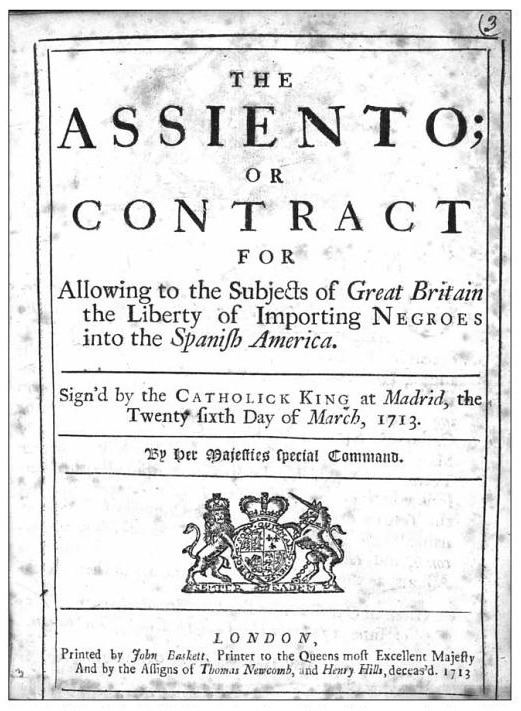 | ||
The Treaty of Madrid was a commercial treaty signed between Britain and Spain on 5 October 1750. It followed the Treaty of Aix-la-Chapelle, which had brought a close to the War of the Austrian Succession in 1748, and resolved lingering Spanish concerns about the Asiento contract.
Contents
Background
The Treaty of Utrecht in 1713 had given Britain a thirty-year asiento, or contract-right, to supply an unlimited number of slaves to the Spanish colonies, and 500 tons of goods per year. This provided British traders and smugglers potential inroads into the (traditionally) closed markets in Spanish America. However, Britain and Spain were often at war, fighting each other in the War of the Quadruple Alliance (1718–20), the Blockade of Porto Bello (1726), the Anglo-Spanish War (1727–1729), and the War of Jenkins' Ear (1739), the latter merging into the much wider War of the Austrian Succession in 1742.
The War of Austrian Succession concluded in status quo ante bellum and most parties remained unhappy with the treaty that followed. The matter of the asiento was not even mentioned in the treaty, as it had lessened in importance to both nations, although both parties had agreed to resolve outstanding concerns at a "proper time and place". The issue was finally settled in 1750 when Britain agreed to renounce its claim to the asiento in exchange for a payment of £100,000 and British trade with Spanish America under favourable conditions.
Provisions
The Treaty contained ten provisions:
- Britain would renounce its claim to the Asiento and the right to an annual ship.
- Spain would compensate Britain with a payment of £100,000; in return, Britain would make no further claims.
- Spain would yield to Britain all "pretensions or demands" relating to the Asiento and the annual ship.
- British subjects would not be bound to pay higher (or other) duties in Spanish ports than they paid during the reign of Charles II of England.
- British subjects would be permitted to gather salt at Tortudos, as they had in the time of Charles II.
- British subjects would not pay higher duties than Spanish subjects.
- Subjects of both nations would pay the same duties, when bringing merchandise into each other's country by land, as they would by sea.
- Both countries would abolish all "innovations" that had been introduced into commerce.
- Arrangements were made to integrate the Treaty into the existing treaty system.
- An undertaking was made to execute the provisions of the Treaty promptly.
Aftermath
Relations between Britain and Spain dramatically improved during subsequent years thanks to a concerted effort by the Duke of Newcastle to cultivate Spain as an ally. A succession of Anglophile ministers were appointed in Spain, including José de Carvajal and Ricardo Wall, all of whom were on good terms with the British Ambassador Benjamin Keene, in an effort to avoid a repeat of hostilities. Spain remained neutral until 1762 in the Seven Years' War between Britain and France.
